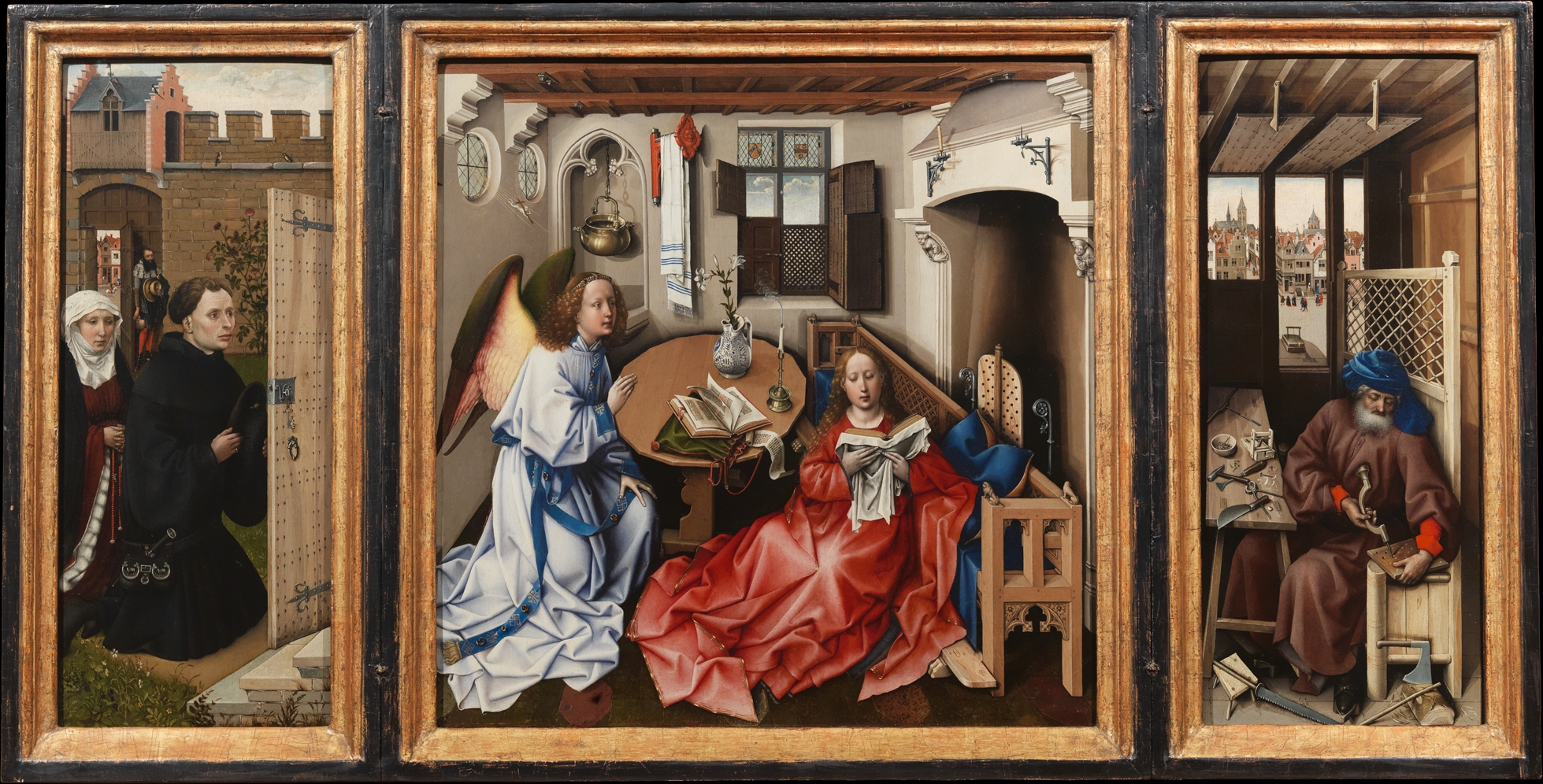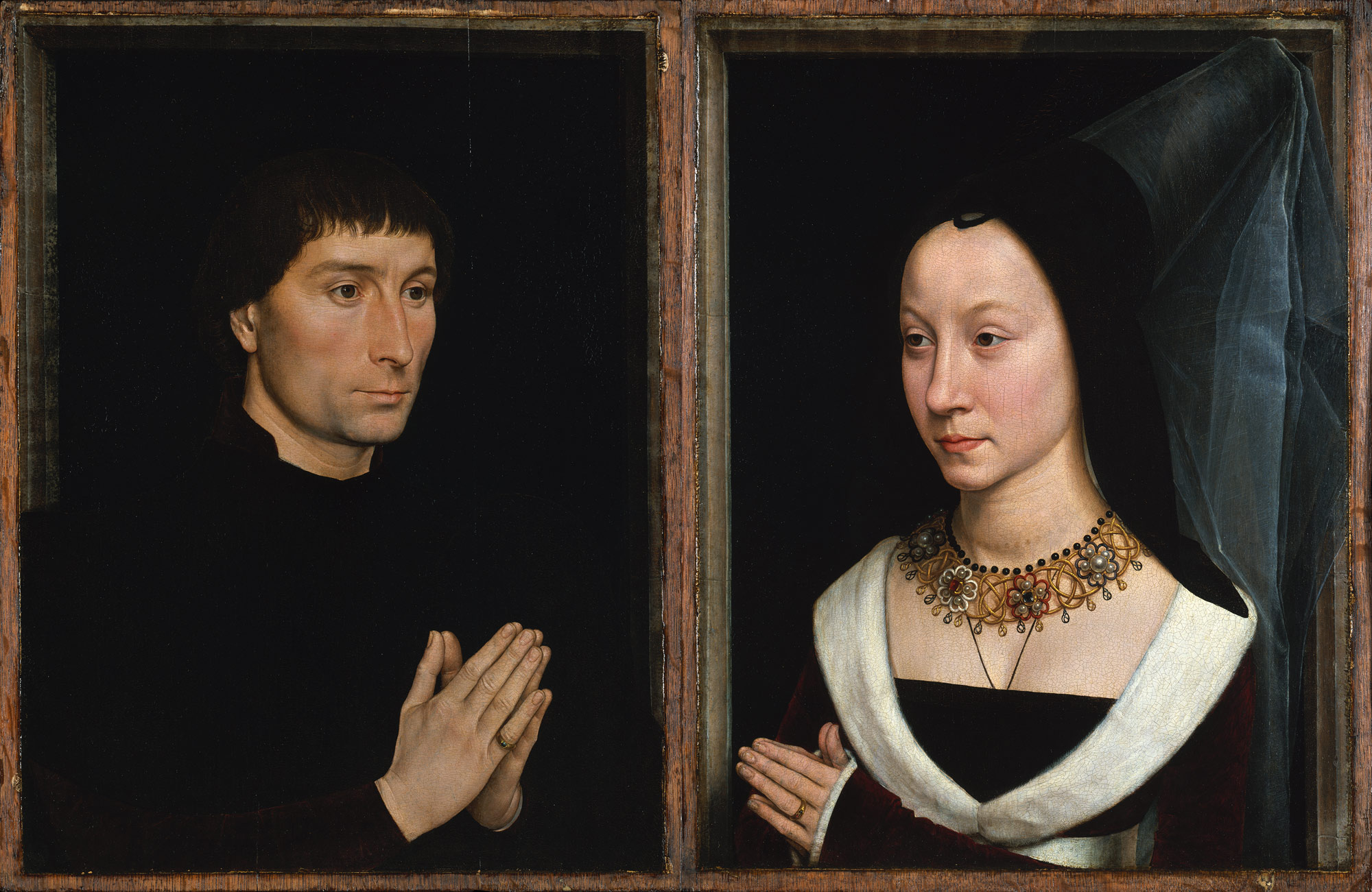Traditional self portraiture
My new question finalized: How can I explore the inner self through traditional self-portraiture?
What is traditional portraiture?
A portrait is typically defined as a representation of a specific individual, such as the artist might meet in life. A portrait does not merely record someone’s features, however, but says something about who he or she is, offering a vivid sense of a real person’s presence.
 |
| Workshop of Robert Campin (Netherlandish, ca. 1375–1444 Tournai) (The Metropolitan Museum of Art, 2000) |
 |
| Tommaso di Folco Portinari (1428–1501); Maria Portinari (Maria Maddalena Baroncelli, born 1456) (The Metropolitan Museum of Art, 2000) |
The traditions of portraiture in the West extend back to antiquity and particularly to ancient Greece and Rome, where lifelike depictions of distinguished men and women appeared in sculpture and on coins. After many centuries in which generic representation had been the norm, distinctive portrait likenesses began to reappear in Europe in the fifteenth century. This change reflected a new growth of interest in everyday life and individual identity as well as a revival of Greco-Roman custom. The resurgence of portraiture was thus a significant manifestation of the Renaissance in Europe.
The earliest Renaissance portraits were not paintings in their own right, but rather important inclusions in pictures of Christian subjects. In medieval art, donors were frequently portrayed in the altarpieces or wall paintings that they commissioned, and in the fifteenth century painters began to depict such donors with distinctive features presumably studied from life. An example is Robert Campin’s Annunciation Triptych (Merode Altarpiece) (Sorabella & , "Introduction to Art Concepts", 2007) of about 1427–32, in which the man and woman in the left wing have the specificity characteristic of portraiture. Hans Memling’s portraits of Tommaso and Maria Portinari (Sorabella & , "Introduction to Art Concepts", 2007), painted around 1470, were also probably meant to flank the image of a saint in a small triptych, yet each likeness fills a whole panel and has the emphasis of a portrait in its own right.
One of the hallmarks of European portraiture is a sense of reality, an apparent intention to depict the unique appearance of a particular person. Each portrait is thus meant to express individual identity, but as Erwin Panofsky recognized, it also “seeks to bring out whatever the sitter has in common with the rest of humanity” (quoted in Shearer West, Portraiture (Sorabella & , "Introduction to Art Concepts", 2007)). This second aspect of portraiture comes across in the considerable conservatism of the genre: most portraits produced in Renaissance and Baroque Europe follow one of a very small range of conventional formats
Sorabella, J. (2007, August). Introduction to Art Concepts. Retrieved May 14, 2019, from https://courses.lumenlearning.com/atd-sac-artappreciation/chapter/oer-1/
T. (2000). Heilbrunn Timeline of Art History. Retrieved May 14, 2019, from https://www.metmuseum.org/toah/works-of-art/14.40.626-27/
T. (Ed.). (2000, July). Annunciation Triptych (Merode Altarpiece). Retrieved May 14, 2019, from https://www.metmuseum.org/art/collection/search/470304

Comments
Post a Comment